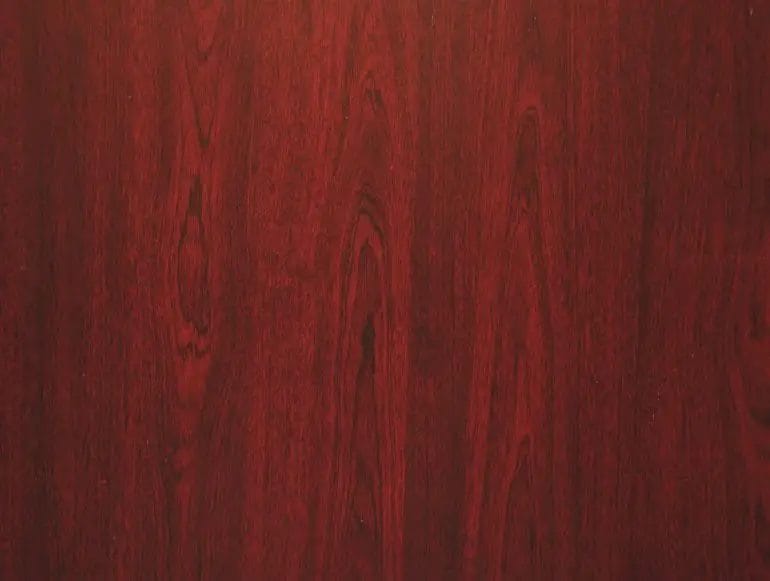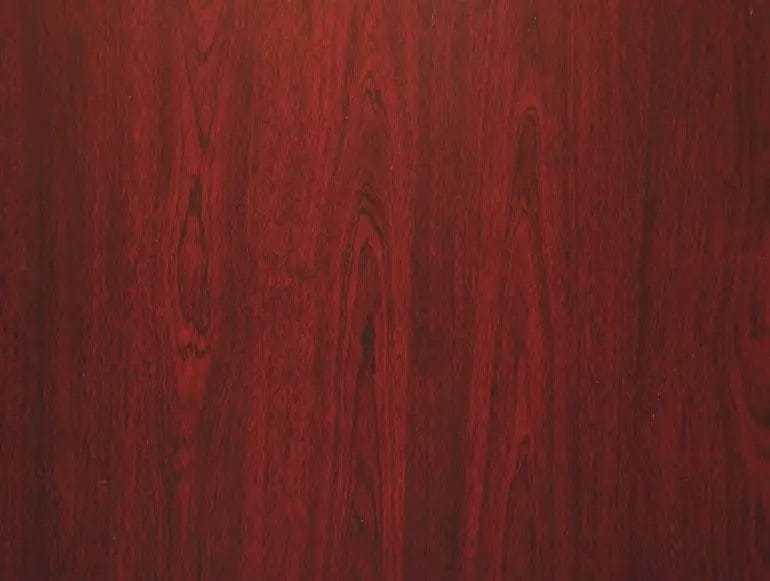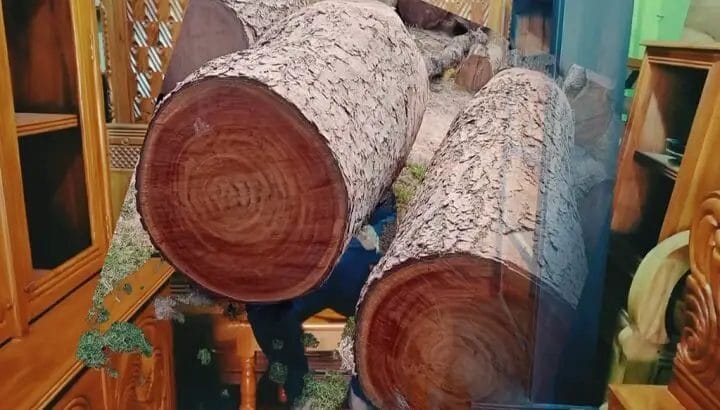Mahogany wood is known for its beauty, durability, and rich reddish-brown color, making it a popular choice for furniture and interior design. Its high demand and limited supply contribute to its reputation as an expensive wood option.
Renowned for its distinctive grain patterns and resistance to warping, mahogany is often used in high-end furniture pieces, musical instruments, and luxury home decor. Its price may vary depending on the grade and quality of the wood, but overall, mahogany wood tends to be more expensive compared to other types of wood.

If you’re looking for a luxurious and long-lasting wood option, mahogany is worth considering, although it’s important to be aware of its higher price point.

Factors Influencing the Price of Mahogany Wood
Mahogany wood is highly sought after for its beauty, durability, and versatility. It is a popular choice for furniture makers, interior designers, and homeowners alike. However, the price of mahogany wood can vary significantly based on several factors. Understanding these factors can help you make informed decisions when purchasing mahogany wood for your projects. In this section, we will explore the key factors that influence the price of mahogany wood.
1. Species and Origin
The price of mahogany wood can vary depending on the specific species and its country of origin. There are various types of mahogany, including Honduran, African, and Philippine mahogany. Each species has its own unique properties and characteristics, which can affect its price. Honduran mahogany, for example, is highly prized for its rich color and fine grain, making it more expensive compared to other species.
The country of origin also plays a role in determining the price of mahogany wood. Mahogany from certain regions, such as South America or Africa, may be more expensive due to factors such as transport costs, export restrictions, or limited availability.
2. Quality and Grade
The quality and grade of mahogany wood significantly impact its price. Higher-grade mahogany, which is characterized by fewer knots, uniform color, and straight grain, is generally more expensive. This is because it requires careful selection and processing to ensure a flawless appearance.
Lower-grade mahogany, on the other hand, may have more imperfections and variations in color and grain, resulting in a lower price point. While lower-grade mahogany may still be suitable for certain applications, it may not possess the same level of beauty and consistency as higher-grade wood.
3. Sustainability and Certification
Mahogany wood is harvested from tropical forests, and its popularity has led to concerns about sustainability and environmental impact. Sustainable forestry practices, such as responsible harvesting and reforestation, can contribute to the higher price of certified mahogany wood.
Certification from reputable organizations like the Forest Stewardship Council (FSC) ensures that mahogany wood is sourced from sustainably managed forests. This certification adds value to the wood and gives consumers confidence in their purchase, thereby affecting its price.
4. Market Demand and Supply
The basic principles of supply and demand also influence the pricing of mahogany wood. When there is a high demand for mahogany wood, such as during periods of increased construction or furniture manufacturing, the price tends to rise. Conversely, when the supply of mahogany is abundant, the price may decrease.
Factors such as economic conditions, global trade policies, and market trends can affect the demand and supply of mahogany wood. It is essential to stay informed about these factors to anticipate potential fluctuations in price.
5. Processing and Finishing
The processing and finishing of mahogany wood can impact its price. Some manufacturers offer pre-finished mahogany wood, which undergoes additional steps such as sanding, staining, and sealing. This added value can result in a higher price compared to unfinished or rough-cut wood.
Furthermore, specialty cuts or customizations, such as quarter-sawn or book-matched veneers, can also add to the cost of mahogany wood. These processes require additional labor and expertise, resulting in a higher price per board foot.
Summary
The price of mahogany wood is influenced by various factors, including the species and origin, quality and grade, sustainability and certification, market demand and supply, as well as processing and finishing. Understanding these factors can help you make informed decisions when purchasing mahogany wood for your projects. Consider your specific needs and budget while taking into account the desired quality, sustainability, and market conditions to find the perfect mahogany wood at the best price.

Affordable Alternatives to Mahogany Wood
When it comes to furniture and woodworking projects, mahogany wood is known for its beauty and durability. However, the high cost of mahogany can make it less accessible to some individuals. Fortunately, there are several affordable alternatives to mahogany wood that can still provide a similar look and quality without breaking the bank. In this section, we will explore some of these alternatives and their unique features.
1. Rubberwood
Rubberwood, also known as plantation hardwood or parawood, is a sustainable and cost-effective alternative to mahogany wood. It is sourced from the rubber tree, which is primarily cultivated for latex production. After the rubber tree completes its latex-producing cycle, it is harvested for its wood.
Rubberwood has a similar appearance to mahogany, with a light to medium brown color and straight grain patterns. It is also known for its strength and durability, making it suitable for furniture manufacturing. Additionally, rubberwood is resistant to warping and shrinking, making it a reliable choice for indoor furniture.
2. Acacia Wood
Acacia wood is another affordable alternative to mahogany that offers a striking resemblance in color and grain pattern. It is known for its warm, reddish-brown hue and beautiful natural variations. Acacia wood is sourced from the fast-growing acacia tree, making it a sustainable option.
In terms of durability, acacia wood is highly resistant to scratches and water damage. It is commonly used for crafting solid wood furniture, flooring, and cabinetry. The natural oils present in acacia wood also help to enhance its longevity and protect it from pests and fungi.
3. Pine Wood
Pine wood is a popular and affordable choice for furniture and woodworking projects. While it may not have the same rich color as mahogany, pine wood offers a unique charm with its light, creamy complexion and distinctive grain patterns.
Pine wood is known for its versatility and ease of customization. It is relatively soft, making it easy to work with and ideal for DIY enthusiasts. Pine wood is commonly used for constructing furniture pieces like tables, chairs, and shelves.
4. Birch Wood
Birch wood is a cost-effective alternative that can mimic the appearance of mahogany with its reddish-brown color and occasional dark streaks. It has a fine texture and straight grain, giving it a polished and elegant look.
Aside from its aesthetic appeal, birch wood is also valued for its strength and durability. It is resistant to dents and scratches, making it suitable for furniture that experiences regular use. Birch wood is commonly used for cabinets, doors, and flooring.
5. Bamboo
Bamboo is a sustainable and affordable alternative to mahogany wood. It is a lightweight and fast-growing grass that can be harvested within a few years. Bamboo has a unique appearance with its light color and distinctive grain patterns.
Despite its lightweight nature, bamboo is incredibly strong and durable. It is commonly used for furniture, flooring, and even structural applications. Bamboo is also naturally resistant to moisture, pests, and molds, making it an excellent choice for outdoor furniture.
In summary, if you are looking for affordable alternatives to mahogany wood, consider options like rubberwood, acacia wood, pine wood, birch wood, and bamboo. Each of these alternatives offers its own unique characteristics and benefits, allowing you to achieve a similar aesthetic and quality to mahogany at a more budget-friendly price.

Understanding the Quality and Durability of Mahogany Wood
Mahogany wood is highly valued for its exceptional quality and durability. In this section, we will delve into the characteristics that make mahogany a sought-after choice for various applications, including furniture, musical instruments, and even boat building.
1. Natural Beauty and Appearance
Mahogany wood is renowned for its rich, reddish-brown color and stunning grain patterns. The wood has a warm and inviting aesthetic that adds elegance to any space. Its smooth texture and consistent grain make it a pleasure to work with for craftsmen and designers alike.
2. Strength and Durability
Mahogany is known for its exceptional strength and durability. It has fantastic hardness and resistance to wear and tear, making it highly suitable for furniture and flooring that withstand heavy use. This wood is resistant to decay, rot, and insect damage, making it a long-lasting investment.
3. Stability
Mahogany wood has excellent dimensional stability. It is less prone to warping, shrinking, or expanding compared to other types of wood. This stability makes it an ideal choice for applications where changes in temperature and humidity are common, such as outdoor furniture or kitchen cabinets.
4. Workability
One of the reasons why mahogany is favored by craftsmen is its exceptional workability. It can be easily shaped, carved, and machined, allowing for intricate designs and details. The wood also takes stains and finishes exceptionally well, enhancing its natural beauty even further.
5. Acoustic Properties
Mahogany is highly regarded in the world of musical instruments, particularly in acoustic guitars. It possesses excellent tonal qualities, producing warm and resonant sound. The wood’s density and specific gravity contribute to its ability to create a balanced and clear tone.
6. Sustainability
While mahogany is a prized wood, it is also important to consider its sustainability. It is crucial to source mahogany from well-managed and legal sources to ensure the preservation of this valuable resource. Look for certifications such as the Forest Stewardship Council (FSC) to guarantee the sustainability of mahogany products.
7. Maintenance
Proper maintenance is key to preserving the quality and durability of mahogany wood. Regular cleaning and polishing can help maintain its natural luster. Additionally, protecting mahogany furniture from direct sunlight and excessive moisture is essential to prevent fading and damage.
Summary
Mahogany wood is prized for its natural beauty, strength, durability, and workability. Its rich color, stability, and acoustic properties make it a popular choice for a wide range of applications. Ensuring the sustainable sourcing and proper maintenance of mahogany products can help preserve their quality for generations to come.
Best Practices for Buying Mahogany Wood at a Reasonable Price
Mahogany wood is known for its rich, warm tones and durability, making it a popular choice for furniture and decorative items. However, it can also be quite expensive. If you’re looking to buy mahogany wood at a reasonable price, there are a few best practices you can follow. In this section, we’ll explore these practices in detail.
1. Research Different Suppliers
The first step in finding mahogany wood at a reasonable price is to research different suppliers. Start by checking local lumberyards, online marketplaces, and specialty woodworking stores. Look for suppliers that have a reputation for selling high-quality wood at competitive prices.
It’s also a good idea to read customer reviews and ratings of the suppliers you’re considering. This will give you an idea of their reliability and the quality of the products they offer. Don’t hesitate to reach out to the suppliers and ask for more information or clarifications regarding their pricing.
2. Compare Prices
Once you’ve identified a few potential suppliers, it’s time to compare prices. Get quotes from each supplier for the specific type and size of mahogany wood you need. Take note of any additional charges such as delivery fees or taxes.
While price shouldn’t be the sole determining factor, it’s important to ensure that you’re getting a fair deal. Be wary of overly cheap prices, as they may indicate inferior quality or deceptive practices. On the other hand, excessively high prices may not necessarily guarantee exceptional quality.
3. Consider Different Grades of Mahogany
Mahogany wood is available in various grades, each with its own characteristics and price points. Understanding these grades can help you make a more informed decision. Generally, there are three main grades:
- First Grade: This is the highest quality, with minimal defects and a uniform appearance. It is also the most expensive.
- Second Grade: This grade may have slightly more defects, but it is still of good quality. It is often more affordable than first-grade mahogany.
- Third Grade: This grade has more visible defects and variations in color and grain. It is the most affordable option.
Consider the purpose of your project and the level of quality you require. If you’re building fine furniture, investing in first-grade mahogany may be worth it. However, if you’re working on a less demanding project, second or third-grade mahogany can still provide satisfactory results at a lower cost.
4. Opt for Sustainably Sourced Wood
When buying mahogany wood, it’s important to consider its source. Look for suppliers who promote sustainable forestry practices and offer wood certified by organizations such as the Forest Stewardship Council (FSC). Sustainably sourced wood ensures that the mahogany is harvested responsibly, minimizing the negative impact on the environment.
By choosing sustainably sourced mahogany, you not only contribute to forest conservation but also support ethical and responsible business practices.
5. Take Advantage of Sales and Discounts
Keep an eye out for sales, discounts, and promotions offered by suppliers. Sign up for newsletters or follow their social media accounts to stay updated on any special offers. This can help you secure mahogany wood at a more affordable price.
However, be cautious when availing of discounts or promotions. Ensure that the quality of the wood is not compromised, and it meets your specific requirements.
Summary
Buying mahogany wood at a reasonable price requires careful research, comparison, and consideration of different grades. Look for reputable suppliers, compare prices, and consider the quality you need for your project. Opt for sustainably sourced wood whenever possible and take advantage of sales and discounts without compromising on quality. By following these best practices, you can find affordable mahogany wood without sacrificing its beauty and durability.
FAQs
Is mahogany wood expensive?
Yes, mahogany wood is generally considered to be expensive. It is a high-quality hardwood known for its durability, beauty, and versatility. The cost of mahogany wood can vary depending on factors such as the source, grade, and availability.
Conclusion
In conclusion, mahogany wood is considered to be one of the more expensive types of wood available in the market. Its high cost is mainly due to its exceptional durability, stunning beauty, and limited availability. The rich color and unique grain pattern of mahogany make it highly sought after for furniture and interior decor. However, it’s important to note that the price of mahogany can vary depending on factors such as the source, quality, and market demand. Despite its higher price point, investing in mahogany wood can add a touch of elegance and luxury to any space.
